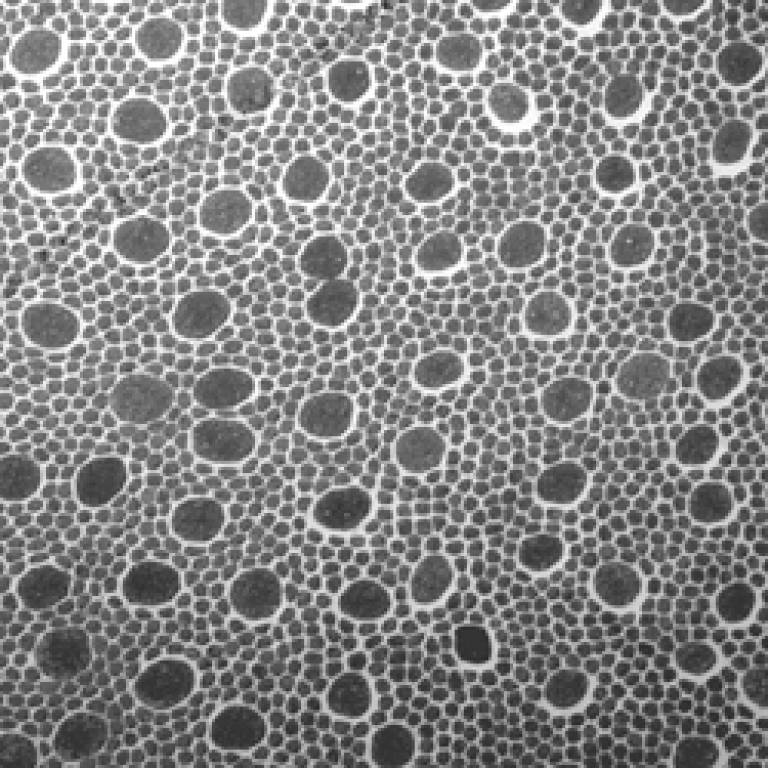See, blind mice!
9 November 2006
A team of scientists led by Professor Robin Ali (UCL Institute of Ophthalmology) and Dr Jane Sowden (UCL Institute of Child Health), has pioneered a stem cell-related treatment to restore the sight of blind mice, which could have significant implications for the repair of the central nervous system.

In a report published in 'Nature' today, the team outline how they restored some vision to mice with a type of eye damage called photoreceptor loss. The condition, which affects photoreceptor cells on the retina and causes irreversible blindness, is quite common in human eye diseases, ranging from age-related macular degeneration to diabetes.
The retina had long been viewed as a promising location for stem cell therapies, because despite the loss of photoreceptor cells, the rest of the wiring to the brain is left intact. It was thought that transplanted photoreceptors would only need to make a single connection with neurons in the retina to restore sight. However, attempts to do this have failed until now because the stem cells used, which have the potential to become many different types of neural cell, did not adjust to their new environment.
Working with Mr Robert MacLaren, a Health Foundation Clinician Scientist and Consultant Surgeon at Moorfields Eye Hospital, the UCL team decided to transplant cells at a later developmental stage than had previously been attempted, believing that they might have a higher probability of success. The report shows that cells taken from the peak rod genesis stage of development, when the retina is about to be formed, did transform into photoreceptor cells after being transplanted onto a degenerating retina. The result was some restoration of sight in mice.
Dr Sowden said: "Remarkably, we found that the mature retina, previously believed to have no capacity for repair, is in fact able to support the development of new functional photoreceptors."
Professor Ali believes that it may be possible to translate this success into treatments for humans without using embryonic stem cells. He said: "Recent research has shown that a population of cells can be found on the margin of the adult retina which have stem cell-like properties. In other words they are capable of self-renewal. These could be harvested through minor surgery and grown in the lab to become photoreceptor precursors before being re-implanted on the retina."
Mr MacLaren added: "This research is the first to show that photoreceptor transplantation is feasible. We still have a long way to go before translating this into an everyday clinical treatment for the thousands of patients who cannot see because their photoreceptors have degenerated. Nevertheless, we now know what can be achieved and we have clearly defined the path of research that we must follow."
'Retinal repair by transplantation of photoreceptor precursors' is the cover story in 'Nature' on 9 November 2006. The research leading to its publication was funded by the Medical Research Council, the Scottish National Institute for the War Blinded and the Royal Blind Asylum and School.
Image: Microscope image of photoreceptor cells on the retina
 Close
Close

